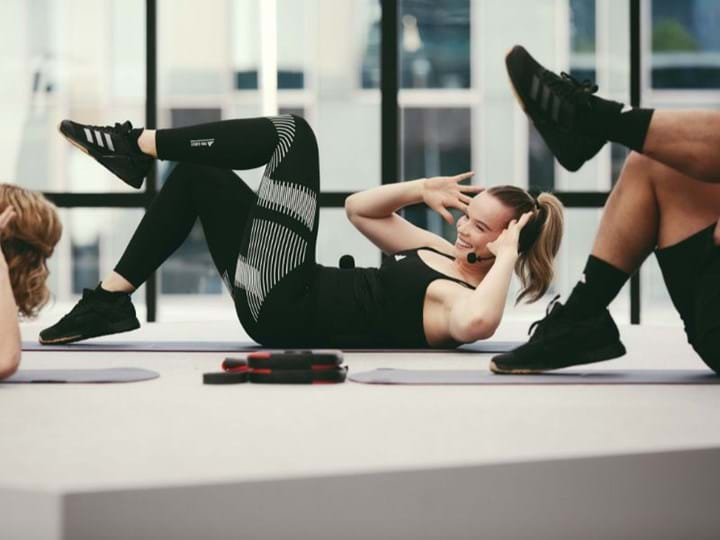
It can often be the case that busy gyms fail to hit their revenue potential – and the struggle to work out why can be frustrating. That’s where crunching the numbers on your club’s floor space and the associated contribution margins can offer up answers.
1. WHY CONTRIBUTION MARGINS MATTER
Understanding the contribution margins of each area of your club is the foundation of sustainable growth. Contribution margins reveal true operational efficiency – and highlight where there’s room for improvement. The stronger your contribution margin, the more fuel you have for growth, and innovation.
Experienced club operator and fitness economist Gerry Salmon outlines the importance of getting to grips with the economics of your club’s space: “The most expensive overhead of any club is the bricks and mortar itself. So you've got to ask, how do I maximize the return from every square meter or square foot? When you look at the layout of a club, you have to ask how much you are dedicating to an exercise space, and how much income that space will generate. Once you've done that, you look inside those exercise spaces and consider how they’re divided up, in order to create the greatest contribution to the club.”

2. THE CONTRIBUTION FORMULA EXPLAINED
Your club’s floor space is one of your most significant operating costs, and with space at a premium, it’s critical to configure the gym floor in a way that maximizes membership capacity and thus revenue potential. But maximizing capacity to increase the number of members you can accommodate is only part of the equation. To fully capture that potential revenue, you must also maximize the utility (how much the space is used) and the flow rate (how often the space turns over per hour). Combined, these factors make up an area’s contribution, measured as contribution per square meter. To maximize efficiency and member experience, industry benchmarks suggest a target of 2 members per square meter (10.7ft²).
The Formula:
CONTRIBUTION = CAPACITY x UTILITY x FLOW RATE
Gerry Salmon’s extensive research into the economics of club design highlights the significant variance in capacity across different gym zones. He notes, “Different activities require different amounts of space. For example, CrossFit style training needs roughly ten square meters per person. A gym floor requires 6 or 7m² per person, cardio is 5m². Group training is positioned well in this space – it can create really high capacity in a studio, which is very attractive.”
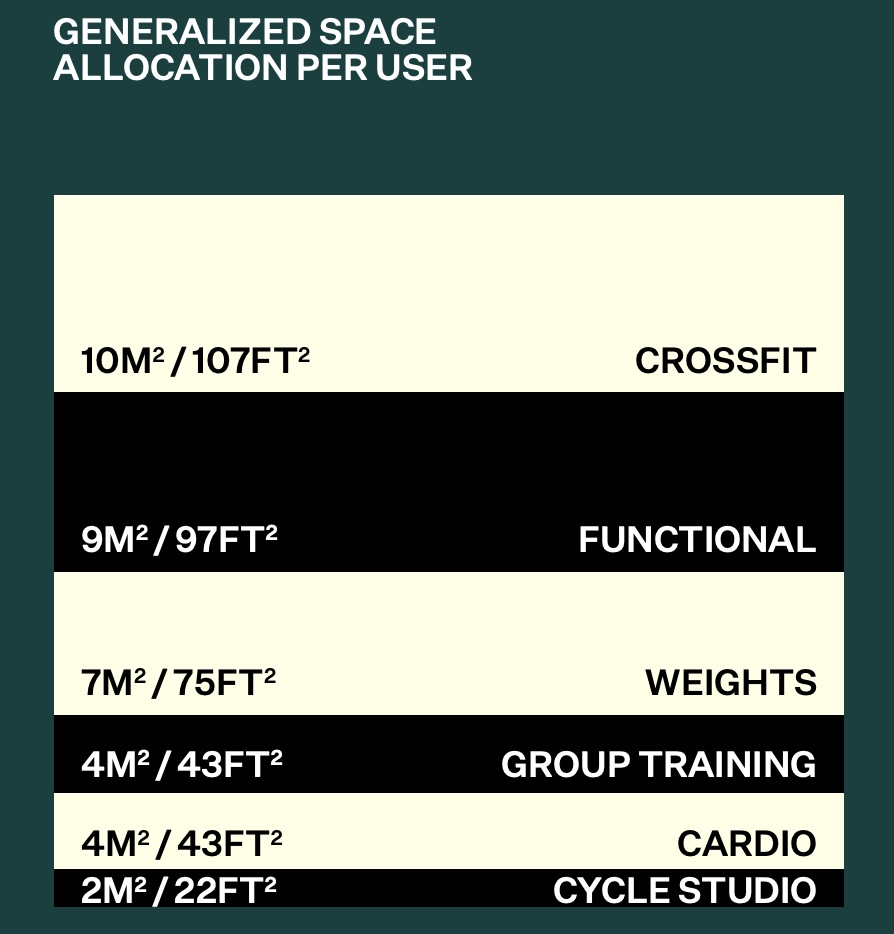
Each space/activity also comes with different utility rates, flow dynamics, and capital/operating costs, which vary depending on the dynamics of your club. But when it comes to maximizing these elements, group training is a game changer, says Gerry: “Not only is there high capacity in group training – roughly 4m2 per person – but it’s high utility as well.
“That means that a lot of people fit in that space comfortably and they love being there, so it draws lots of people into that space. The third part of that contribution equation is the capacity and flow rate – that's how quickly the studio can turn over for a new group of members, especially during peak times.”
Group training with or without equipment empowers you to maximise your flow rate, increasing the turnover of members you can support throughout the day. The structured nature of the workouts keeps participants moving efficiently toward their goals, prevents individuals from monopolizing equipment, and ensures smooth, timely changeovers – all under the guidance of expert Instructors.
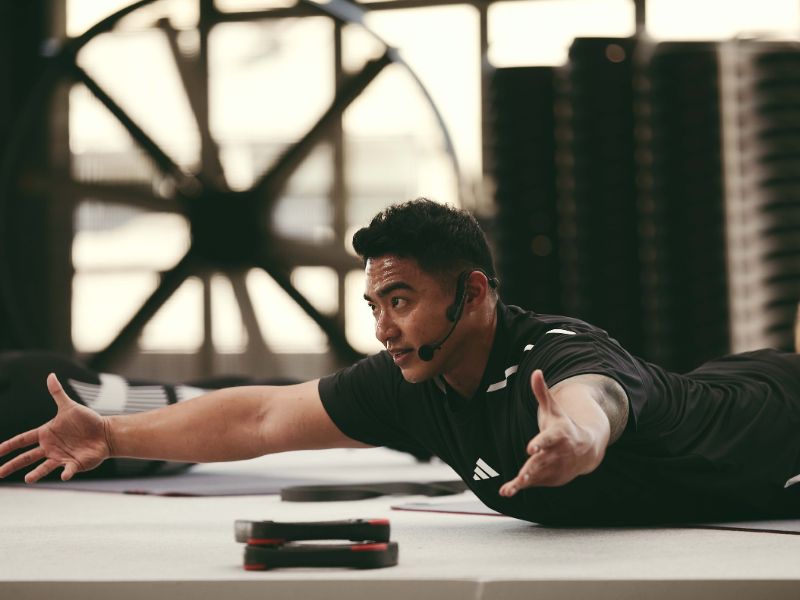
3. OPTIMIZE CAPACITY WITH SMART PROGRAMMING
While it’s important to offer an array of training options to keep pace with trends and appeal to a broad range of demographics, how clubs allocate space has a significant impact on performance and the number of members they can accommodate. With real estate at a premium, prioritizing high-contribution zones enables clubs to optimize floorspace and maximize profitability.
It’s for this reason your group training zones provide real value. A thriving studio allows you to tailor programming to members’ needs – offering express classes, taster sessions and beginners’ slots in addition to your ongoing activities. And during your busiest hours, you pull upwards of 20-40 people off the main gym floor, instantly reducing congestion and helping members stay loyal to your club with community-boosting workouts. An example would be steering members seeking strength training into your strength classes, enabling you to accommodate more of them at the same time and reduce bottlenecks on the busy gym floor.
In Gerry’s experience, missed opportunities to offer shorter classes have prevented operators from extracting maximum value from their studios: “I’ve seen mistakes happening in that space, a lot of workouts were longer than they needed to be, when in actual fact, if you ask your consumer, they'd prefer something quicker – 45 or 30 minute classes in some cases.
“HIIT classes are great for this because members love getting the job done and hitting all the markers at once. And for format economics, it’s gold. So I think some of those learnings we're now starting to grasp in the design of our clubs going forward, and how we can gain the greatest contribution from every square meter, which is so important.”
4. HOW IT WORKS IN PRACTICE
Theory is all well and good – but how does optimizing your studio space play out for member acquisition and retention in practice? Let’s look at two clubs, side by side, one with Les Mills group training, the other without.
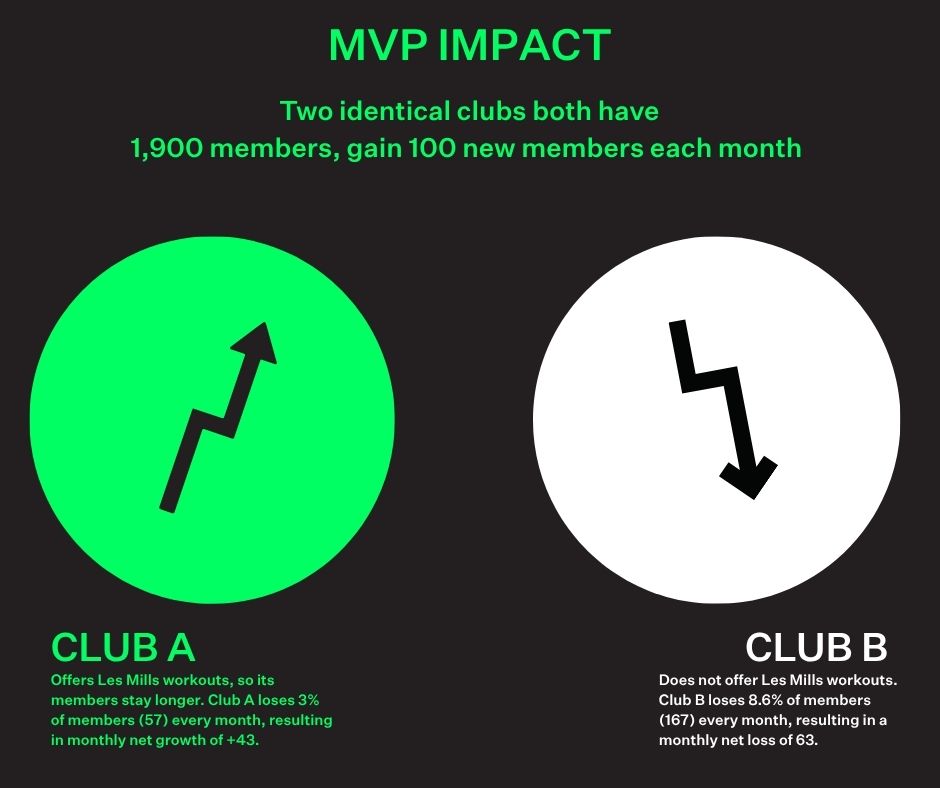
As the diagram shows, the same set of variables – starting with 1900 members, acquiring an additional 100 each month, and charging $40 per member, per month, can result in significant differences when the group training studio is not optimised.
New data collated by ROR Partners and 4Global – covering 2.6m members journeys across 1,312 global facilities – demonstrates that clubs offering Les Mills workouts create MVPs – their Most Valuable Participants. Helping your new and existing members discover the group training studio doesn’t just offer them a ready-made support system with a community they can’t wait to come back to, it protects your bottom line. Clubs with Les Mills workouts lose just 3% of members per month on average, compared to 8.6% of members at clubs where Les Mills workouts are not available. And it doesn’t take long for the leaky bucket to run dry. As club A gains momentum, club B is unable to outrun its shortfalls. The end result of these monthly patterns is a striking story of growth vs loss.
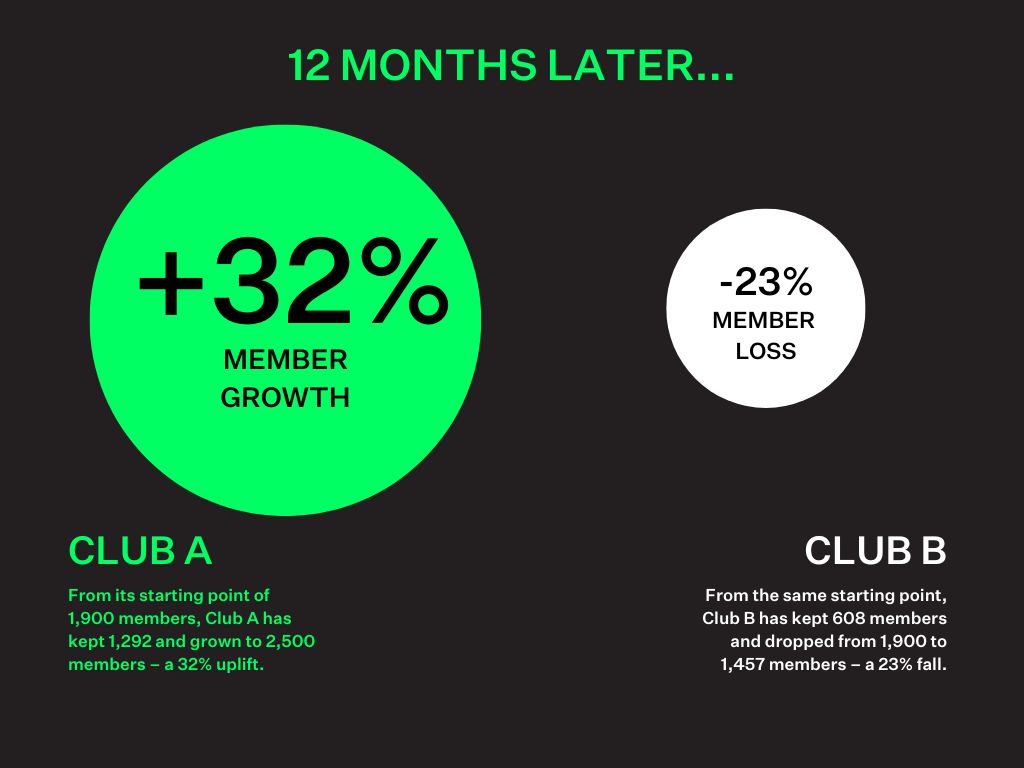
5. WHO ARE MVPs?
MVPs are your Most Valuable Participants, with the potential to transform a business. The new report ‘MVPs: The New Power Players in Club Growth’ reveals that MVPs attend their club more often, stay longer, and have a higher lifetime value (LTV) than any other member category. Ready to learn more about MVPs and start planning a bulletproof retention strategy for your club? Visit the Les Mills Insights Hub and download the free report today.
READY TO GROW YOUR CLUB’S MVPs?
Get the report that tells you who your most valuable participants (MVPs) are, the areas of the club they're gravitating towards and how you can drive growth and retention by creating more of them.
DISCOVER MORE
